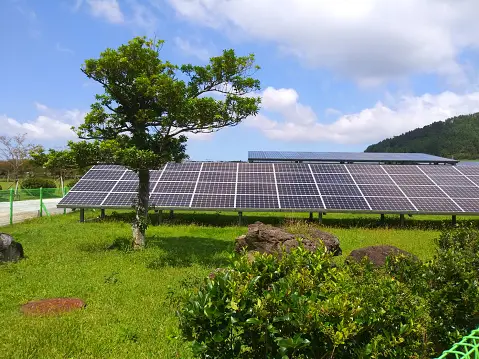Imagine combining the power of multiple solar cells into one – that’s exactly what tandem solar cells do, and they are paving the way towards a solar-powered future. Researchers at NREL (National Renewable Energy Laboratory) are spearheading efforts to bring these next-generation solar solutions closer to mass market adoption.
Why Tandem Solar Cells?
The solar industry must expand rapidly to cater to the growing energy demands of our electrified society. Current solar capabilities hover around 1 terawatt globally, but predictions suggest a need for 75 terawatts by 2050. Tandem solar cells offer a promising solution with their superior efficiency, which comes from stacking multiple solar cell layers to capture more of the solar spectrum. This design not only increases efficiency but potentially reduces overall system costs due to a decreased footprint.
Taking Hybrid Tandems to the Next Level
Leading the charge, Kirstin Alberi from NREL and her team outlined the journey that tandem PV technology must undertake. Although high-performance multijunction III-V solar cells have powered satellites for years, terrestrial applications have lagged behind. The challenge now is revolutionizing hybrid tandem modules to scale, thus making them commercially viable. This involves enhancing efficiency, addressing durability concerns, and perfecting the design for rapid deployment.
Unveiling a Pathway for Progress
The pursuit of hybrid tandems requires navigating an extensive array of material combinations to create the optimal dual-layer solar cell. Matching top and bottom cells is crucial for maximizing solar absorption and conversion. As an example, metal halide perovskites have emerged as cost-effective top-layer contenders that can significantly enhance the performance of conventional silicon cells.
These perovskites, known for their crystalline structure and manufacturing ease, have brought a spirited dynamic to the field. Nonetheless, considerations extend to other materials like Gallium arsenide (GaAs) and Gallium indium phosphide (GaInP), though costs for these remain a barrier. NREL’s researchers are actively exploring more economical production techniques to make these materials more accessible.
For the robust bottom layer, silicon stands out as the solar industry’s titan. The combination of a perovskite top cell and a silicon bottom cell has already achieved record-breaking efficiencies. Integrating these tandem cells into a module, however, presents additional design complexities that need addressing, notes Emily Warren of NREL.
Learning from the Past for Future Success
Looking at the historical scale-up of silicon, CIGS, and CdTe solar technologies gives insights into potential hurdles and strategies for tandem tech. The silicon PV industry flourished due to extensive semiconductor investment, resulting in a wealth of shared knowledge. Conversely, companies with CIGS and CdTe expertise tend to protect their proprietary methods, creating a challenge in spreading this knowledge for wider industry enhancement.
The NREL team promotes collaboration—possibly through a consortium—to enable the sharing of ideas and accelerate innovation. Previous consortia have been instrumental in commercializing single-junction PV technologies; applying a similar model could revolutionize the deployment of hybrid tandems, according to Alberi.
In Conclusion
With the urgency of climate change and the growing demand for clean energy, the development of tandem solar cells has never been more crucial. Through collaboration and innovation, NREL’s roadmap sets the stage for a brighter, solar-powered tomorrow.

























